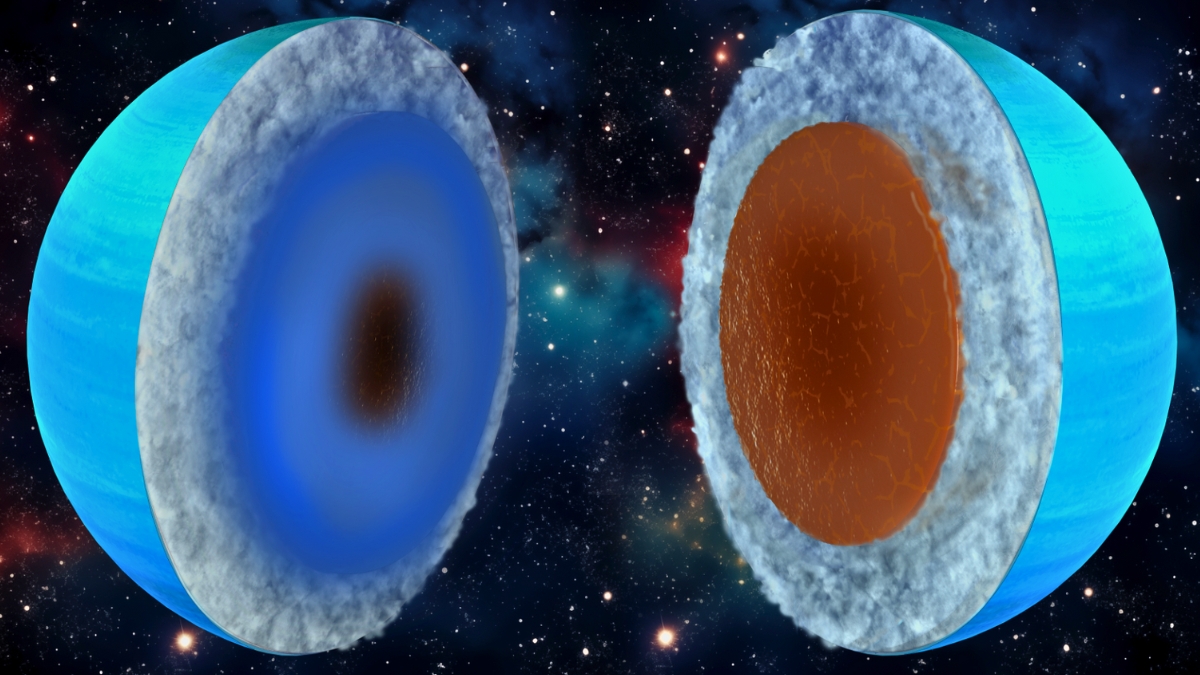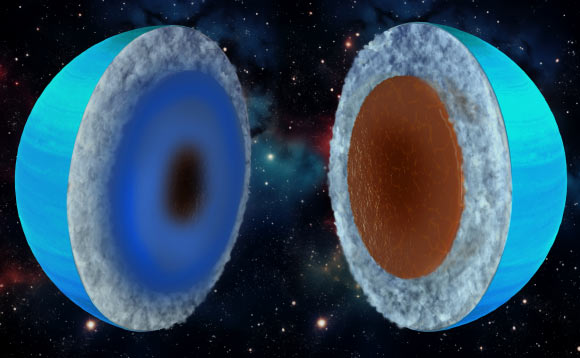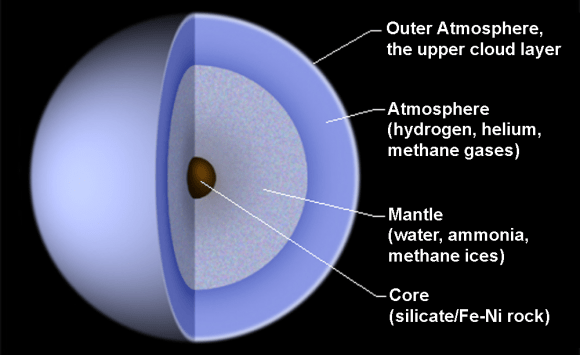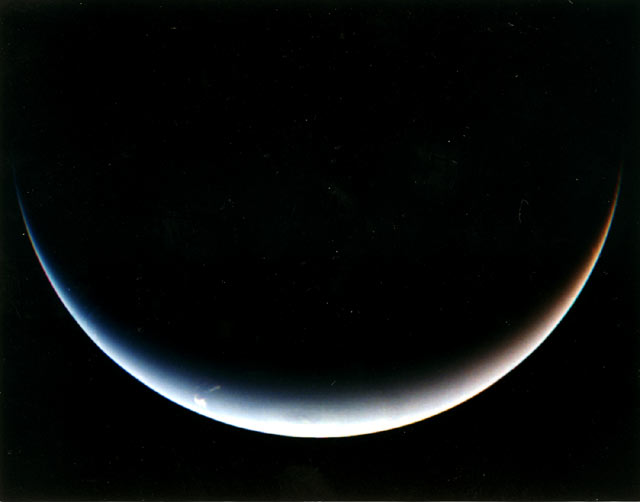
Ice Giants
An ice giant is a giant planet composed mainly of elements heavier than hydrogen and helium, such as oxygen, carbon, nitrogen, and sulfur. There are two ice giants in the Solar System: Uranus and Neptune. In astrophysics and planetary science the term "ices" refers to volatile chemical compounds with freezing points above about 100 K, such as water, ammonia, or methane, with freezing points of 273 K, 195 K, and 91 K, respectively. In the 1990s, it was determined that Uranus and Neptune are a distinct class of giant planet, separate from the other giant planets, Jupiter and Saturn, which are gas giants predominantly composed of hydrogen and helium. As such, Neptune and Uranus are now referred to as ice giants. Lacking well defined solid surfaces, they are primarily composed of gases and liquids. Their constituent compounds were solids when they were primarily incorporated into the planets during their formation, either directly in the form of ices or trapped in water ice.








